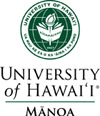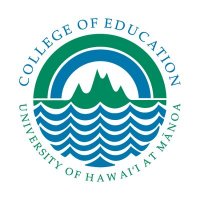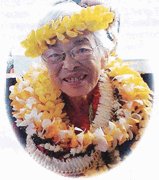Welcome to the Kūlia i Ka Nu‘u website
 Kūlia i Ka Nu‘u, a project funded by the Native Hawaiian Education Act, is housed in the University of Hawai‘i at Mānoa's Curriculum Studies Department. The project is dedicated to preparing teachers to be knowledgeable in strategies that support Native Hawaiian students' success in science and related STEM fields where they are underrepresented. It intends to achieve this goal through by providing teachers with 1) place and culture-based knowledge and skills leading to teacher developed curriculum products, 2) opportunities to participate in authentic science learning communities, and 3) co-instruction by Site Teachers with exemplary sites and programs.
Kūlia i Ka Nu‘u, a project funded by the Native Hawaiian Education Act, is housed in the University of Hawai‘i at Mānoa's Curriculum Studies Department. The project is dedicated to preparing teachers to be knowledgeable in strategies that support Native Hawaiian students' success in science and related STEM fields where they are underrepresented. It intends to achieve this goal through by providing teachers with 1) place and culture-based knowledge and skills leading to teacher developed curriculum products, 2) opportunities to participate in authentic science learning communities, and 3) co-instruction by Site Teachers with exemplary sites and programs.
 Kūlia i Ka Nu‘u provides professional development through EDCS 433 Interdisciplinary Science Curriculum, Mālama I Ka ‘Āina, Sustainability, and EDCS 450 Materials and Methods. Each 3 credit course provides content and strategies that teachers will employ to develop, deliver, and assess culturally responsive, place and standards-based curricula connected to their Native Hawaiian students' lives and communities. The structure and standards-based assignments of the year-long courses engage teachers in collaborative, comprehensive efforts to improve students' learning. Starting in the Summer of 2010, students of EDCS 433 and EDCS 450, have been exploring various sites on O‘ahu. Check out our photo gallery, video gallery, and publications to learn more about us.
Kūlia i Ka Nu‘u provides professional development through EDCS 433 Interdisciplinary Science Curriculum, Mālama I Ka ‘Āina, Sustainability, and EDCS 450 Materials and Methods. Each 3 credit course provides content and strategies that teachers will employ to develop, deliver, and assess culturally responsive, place and standards-based curricula connected to their Native Hawaiian students' lives and communities. The structure and standards-based assignments of the year-long courses engage teachers in collaborative, comprehensive efforts to improve students' learning. Starting in the Summer of 2010, students of EDCS 433 and EDCS 450, have been exploring various sites on O‘ahu. Check out our photo gallery, video gallery, and publications to learn more about us.

 Dr. Isabella "Izzie" Kauakea Aiona Abbott
Dr. Isabella "Izzie" Kauakea Aiona Abbott This spring she helped the
Kūlia team write a chapter on Hawaiian inquiry and gave it the title:
This spring she helped the
Kūlia team write a chapter on Hawaiian inquiry and gave it the title: